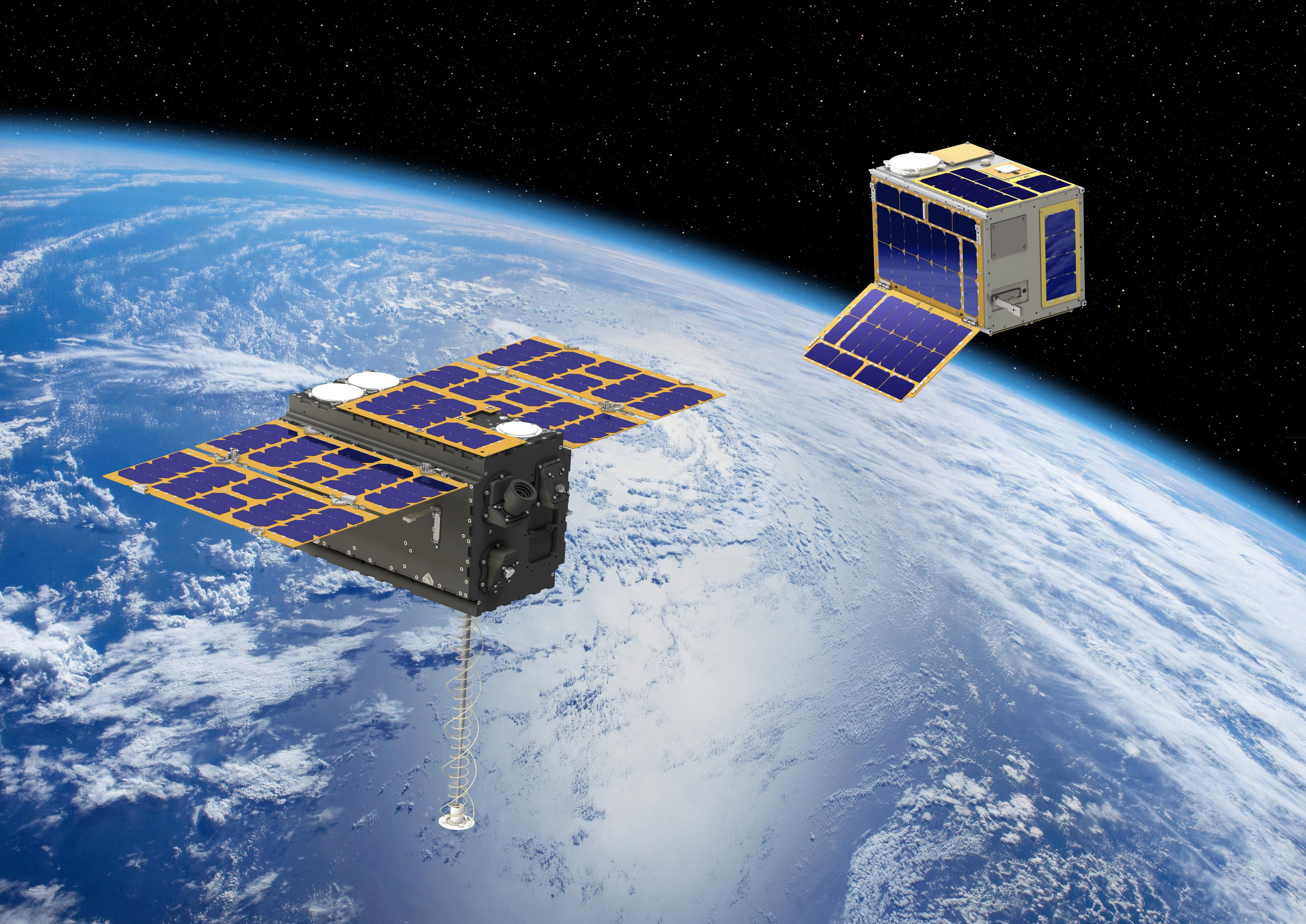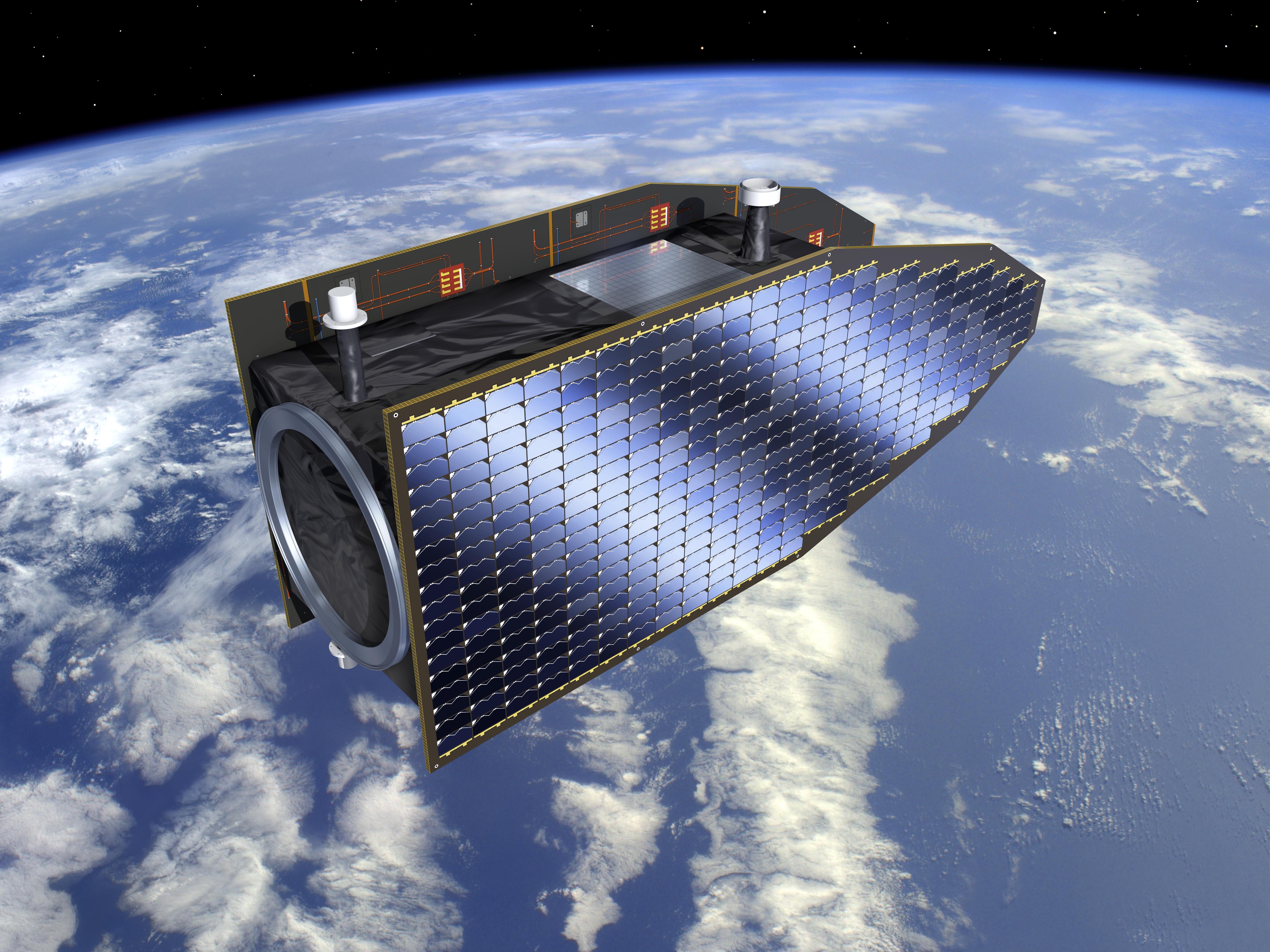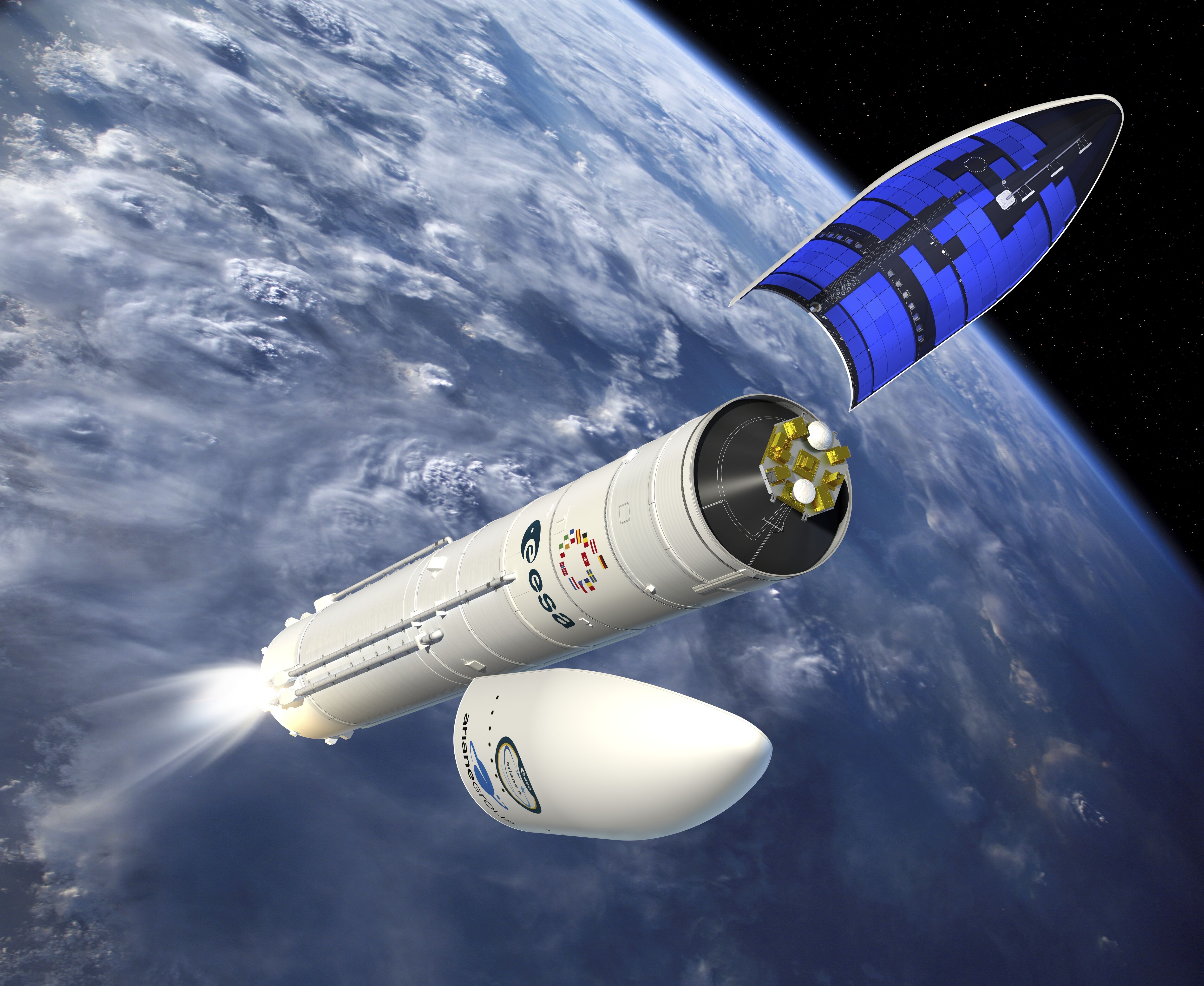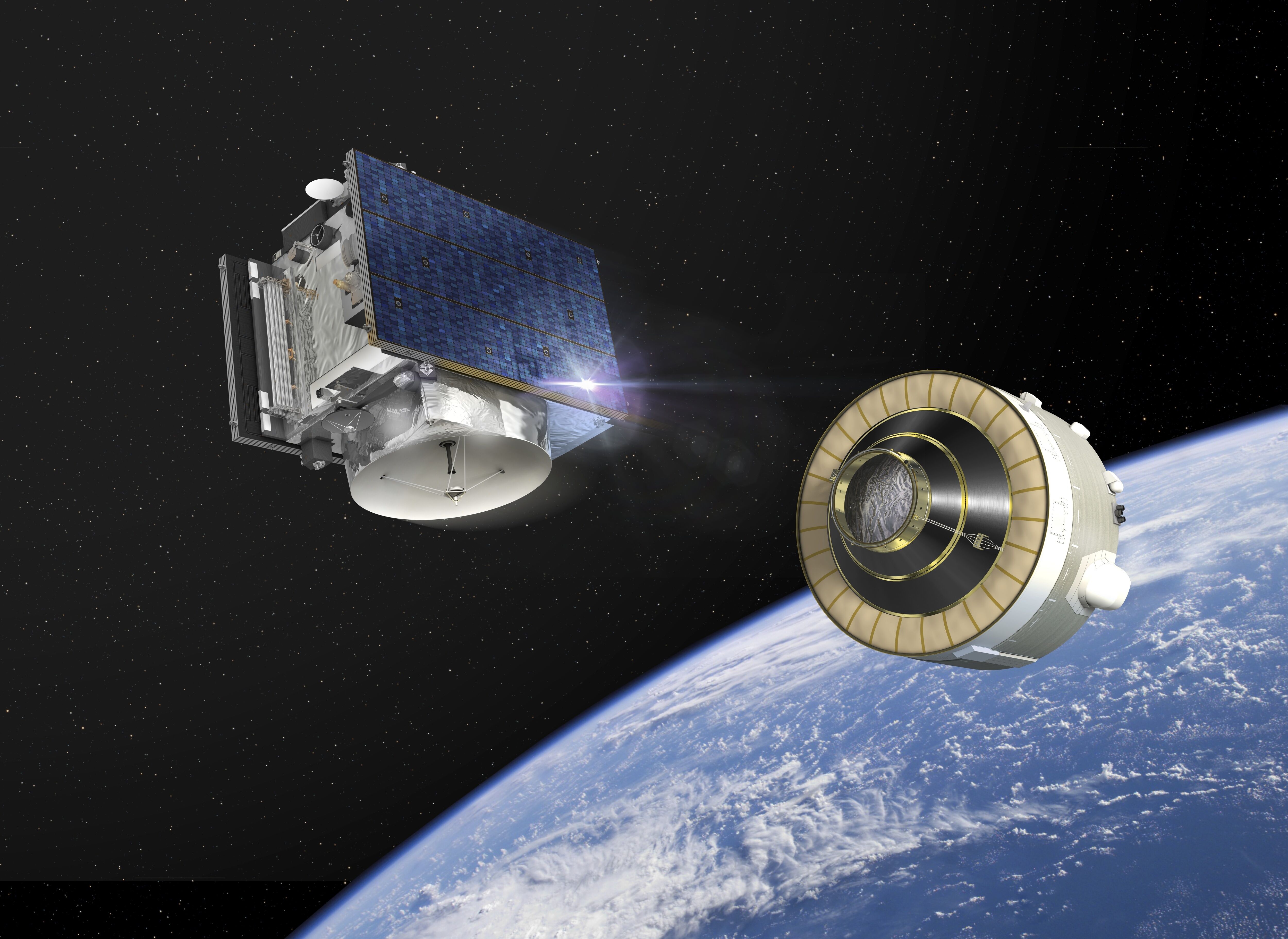Artist's Impressions - Various
Artist view of ESA's Eddington astroseismology observatory
Please sign in to download.
Artist view of ESA's Eddington astroseismology observatory. All stars vary a little in brightness, because they vibrate like ringing bells. The speed of this oscillation is determined by factors such as the size, mass, composition and age of the star. The Eddington observatory, named for British astronomer Arthur Stanley Eddington (1882-1944), will be a precision photometer, that is a device that will measure small changes in the brightness of a celestial object. For example, if Eddington were to observe a swarm of 10 000 fireflies, it would notice if just one of them 'turned off'. This capability will be used study the brightness variations of stars, allowing astronomers to relate them to their internal condition. This technique is known as astroseismology. Eddington will also detect planets passing across the face of their parent star. When a planet crosses a star, it is called a transit and blocks out a tiny fraction of light. Eddington will detect the drop in light, revealing the existence of the planet. Named for British astronomer Arthur Stanley Eddington (1882-1944), Eddington will be launched in 2008, on a Russian Soyuz-Fregat rocket, from the Guiana Space Center (CSG), Europe's space port, in Kourou, French Guiana. It will travel beyond the Moon to the second Lagrangian stability point of the Sun-Earth system (L2), some 1.5 million km beyond Earth orbit, where it will begin its five-year mission in a Lissajous-type, eclipse free orbit. This kind of orbit offers a very stable thermal environment, very high observing efficiency (since the Sun, Earth and Moon are behind the instrument field of view) and a low radiation environment. It will spend two years looking at individual stars, to detect the subtle oscillations of the surface that betray the star's internal conditions. It will also spend three years looking at one single, star-rich field. During this phase, Eddington will search for planets around these stars.



















